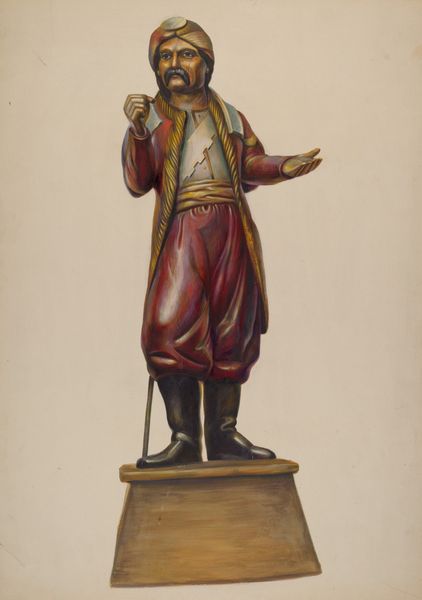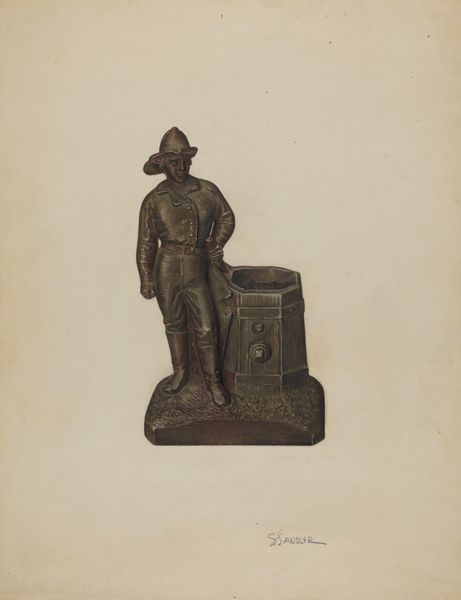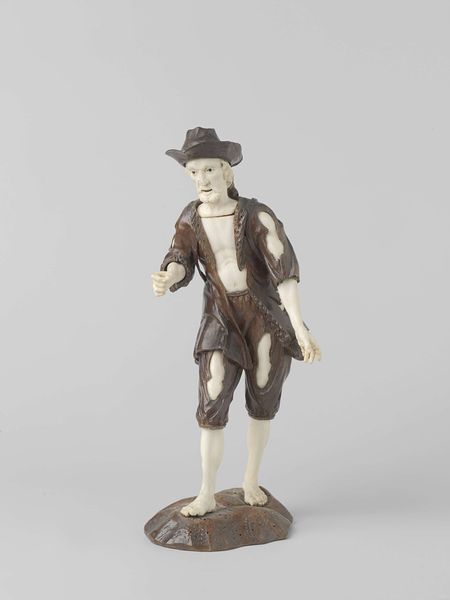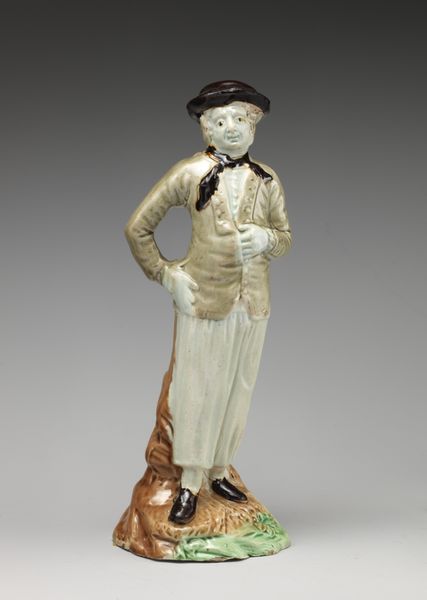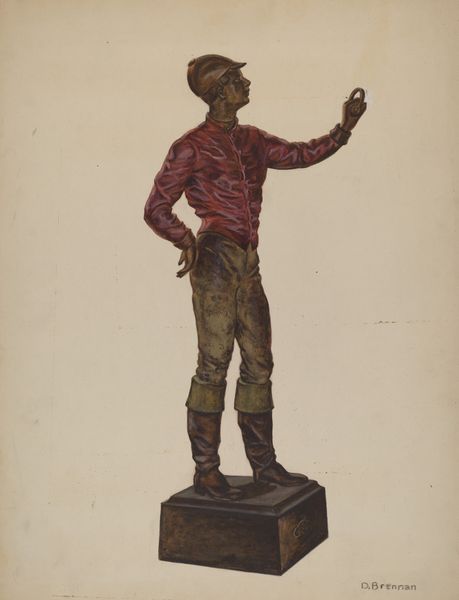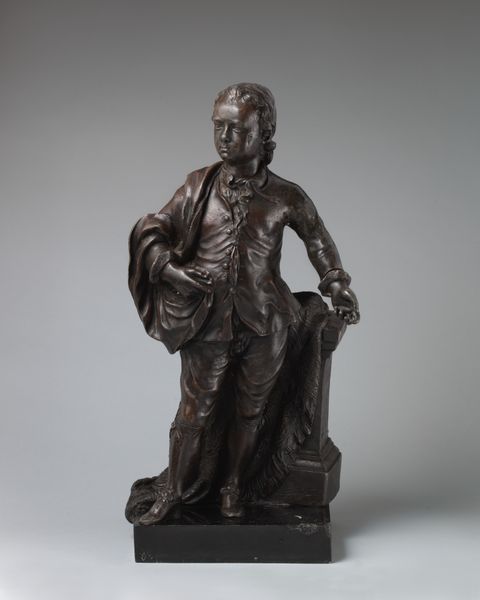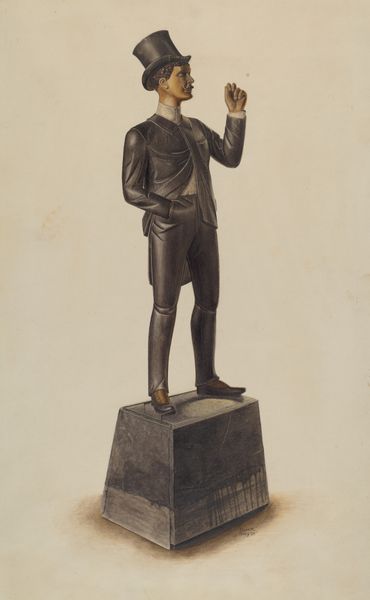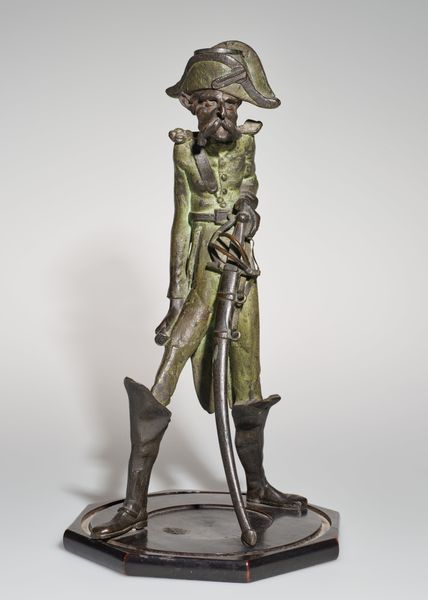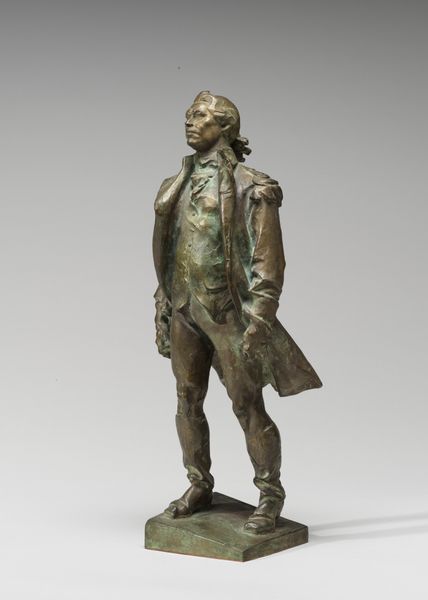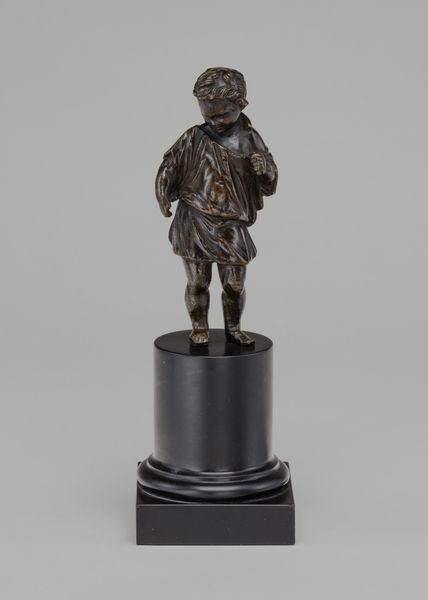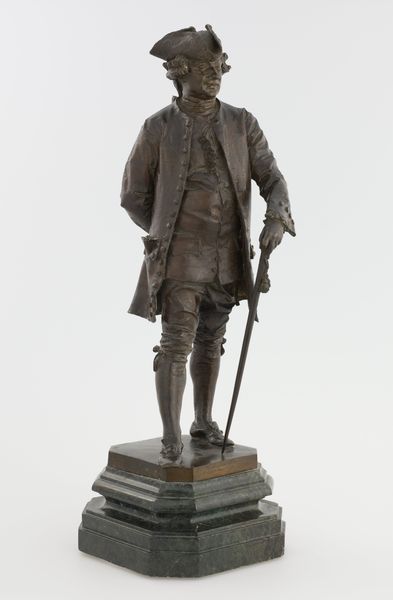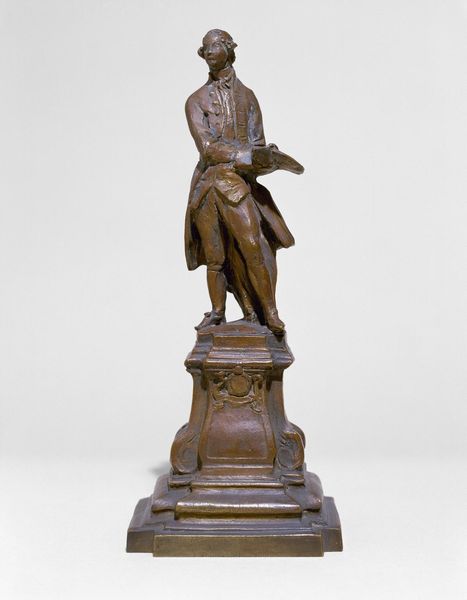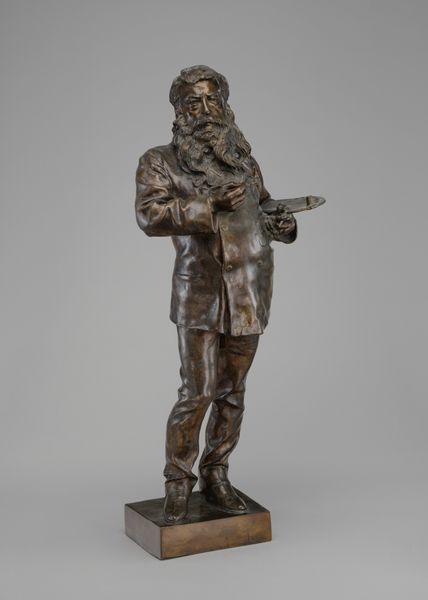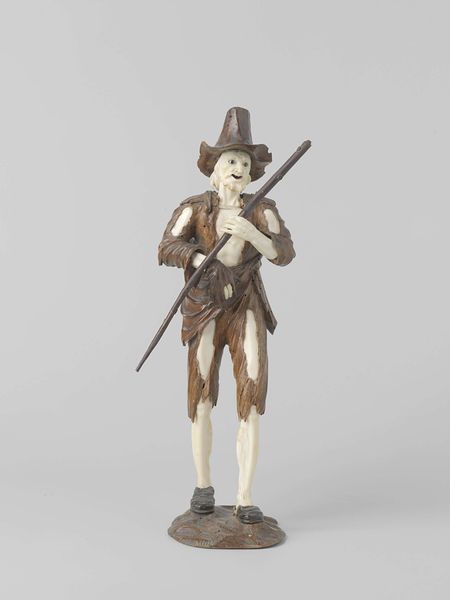
carving, painting, wood
#
portrait
#
carving
#
painting
#
sculpture
#
wood
#
academic-art
#
realism
Dimensions: overall: 42.1 x 33 cm (16 9/16 x 13 in.)
Copyright: National Gallery of Art: CC0 1.0
Curator: What a fascinating rendering of a carving! This work is titled "William Penn Carving," made around 1938. The artist is Frances Lichten. It seems to be a painting of a wooden sculpture of William Penn, perhaps as a record or study of the original. Editor: It's got this somber, solid presence about it, doesn't it? I’m immediately drawn to the wood itself. The carving’s dark tones suggest a dense material and time-worn craftsmanship. You can almost smell the linseed oil, and feel the dust and friction involved. Curator: Precisely. Lichten, known for her interests in Pennsylvania folk art and culture, was probably drawn to record such artisan crafts for posterity. Wood carvings were common during the colonial revival era, reflecting a broader nostalgia and imagined return to early American simplicity. She captured something quintessentially Pennsylvanian here. Editor: Right, I notice the painstaking attention to the layering of fabric in Penn's clothing, and the folds around his sleeves that indicate careful shaping. And I’d wager that the material dictated some of the simplified, rounded contours we see; not exactly easy to execute fine details in wood! Curator: Lichten's choice to document this carving speaks to the broader societal role assigned to historical figures like Penn. He was often cast as an icon of liberty and tolerance, and thus such carvings frequently adorned public spaces or homes, serving as reminders of a perceived virtuous past, influencing both taste and ideology. Editor: Sure. But doesn't that commodification of historical narrative somewhat detract from the individual craftsmanship involved in creating such an object? Each tool mark tells a silent story of labour and choice. Who made it, under what circumstances? Those aspects rarely find their way into the history books, you see? Curator: Indeed! It calls attention to the multiple layers of meaning— the personal story, the larger political one, the hand behind its crafting... Thank you. Editor: And what of the very labor this artist poured in reproducing this carved icon? By recording folk art this way Lichten ensured that the tradition continues, transforming the medium in the process.
Comments
No comments
Be the first to comment and join the conversation on the ultimate creative platform.
